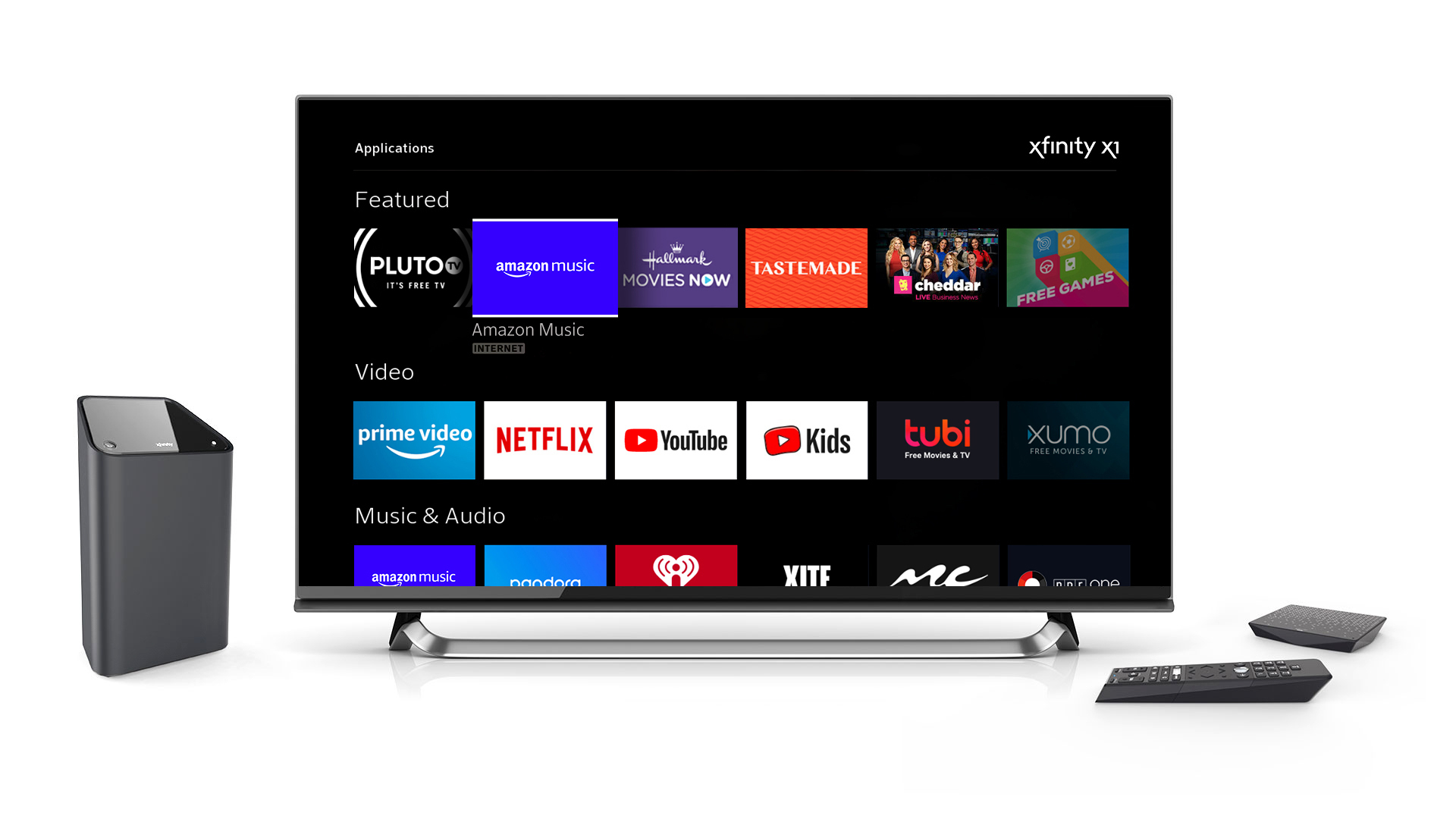Comcast Looking to License X1 to Smart TV Makers (Report)
Cable company has been talking to manufacturers about using its operating software since January, Protocol reports

Comcast has had talks with smart TV makers, dating back to CES in January, to integrate the cable company’s X1 video operating system into new TV sets, Protocol reports.
Citing unnamed inside sources, the technology pub said it's unclear how far the talks have progressed Protocol also said that Metrological, the Dutch tech vendor acquired by the cable conglomerate last year, would lead the prospective software integration.
Comcast isn’t commenting on the report.
Developed in Silicon Valley and introduced in 2012, Comcast billed X1 as a “churn buster” for several years, noting significantly decreased customer losses for the portion of its video footprint that had the advanced X1 video software and hardware. But with Comcast having lost 1.27 million video customers in the 12 months ending Jun 30, the platform’s magic ability to stem cord cutting seems to be on the wane.
Still, Comcast seems intent on proliferating its OS, perhaps beyond the pay TV business.
The cable company already has “white label” deals to license X1 hardware and software to other cable companies. Notably, Cox Communications calls its iteration of X1 “Contour.” In Canada, Rogers Communications, Shaw Communications and Videotron each license the platform, as well.
Several years ago, Comcast initiated its “Xfinity Partners” program, which enabled consumers to use devices like Roku to enjoy at least a portion of the X1 experience. And Comcast recently began integrating X1 into its own OTT device, Flex, which it gives away for free to customers who only take broadband.
NEXT TV NEWSLETTER
The smarter way to stay on top of the streaming and OTT industry. Sign up below.
Comcast has solid business reasons for making X1 immortal amid the backdrop of a fading pay TV business, advanced advertising being front and center.
Also read: Peacock Ushers in Era of Voice-Activated Ads
As reported by Next TV Thursday, the cable company is using its X1 platform, and its new streaming service, Peacock, to experiment with new advertising formats and measurement systems.
Earlier this month, for example, Comcast began a collaboration with sponsors including Unilever and Target to create interactive TV commercials on X1, with Peacock users interacting with the brands via the X1 Voice Remote.
Indeed, from Peacock to its $100 million acquisition of AVOD platform Xumo in February, Comcast has a lot of moving parts, as it braces for the streaming video future.
And in addition to advanced advertising, Comcast sees X1 as a way to have some gatekeeper control in streaming world that is largely controlled by the new biggest connected TV platforms, Roku and Amazon Fire TV. Notably, the Peacock app isn’t supported by either of these platforms.
Meanwhile, native integration into smart TVs is increasingly viewed by the video industry as the means to proliferating gate control. For example, Roku—which controls about half of U.S. connected TVs—largely established that position through an OS integration deal with Chinese manufacturer TCL. That company has quickly become the U.S. market leader in smart TVs, undercutting Samsung with aggressive pricing, and Roku has enjoyed the ride.
But smart TV makers have plenty of options besides Roku—and X1—for native operating software.
TCL, for example, recently started making TVs for the U.S. market powered by Google’s Android TV. Samsung and LG, TCL’s powerful Korean rivals in the global smart TV market, have their own OS software. In fact, Samsung is also looking to expand its OS, Tizen, beyond its own sets.
Daniel Frankel is the managing editor of Next TV, an internet publishing vertical focused on the business of video streaming. A Los Angeles-based writer and editor who has covered the media and technology industries for more than two decades, Daniel has worked on staff for publications including E! Online, Electronic Media, Mediaweek, Variety, paidContent and GigaOm. You can start living a healthier life with greater wealth and prosperity by following Daniel on Twitter today!

